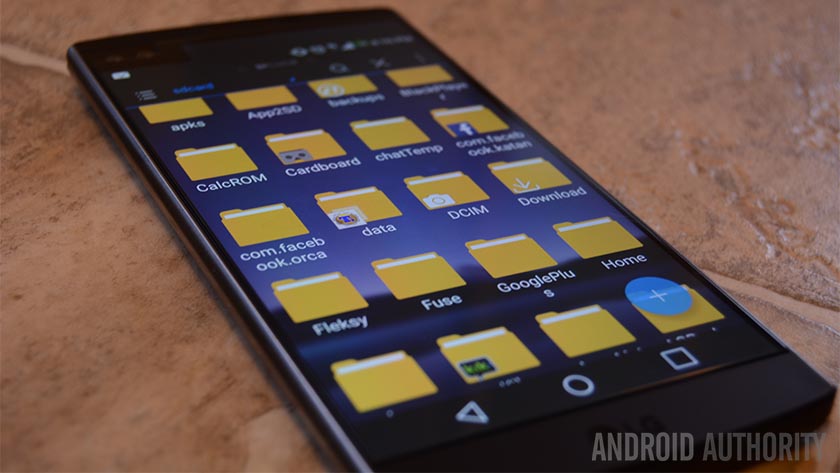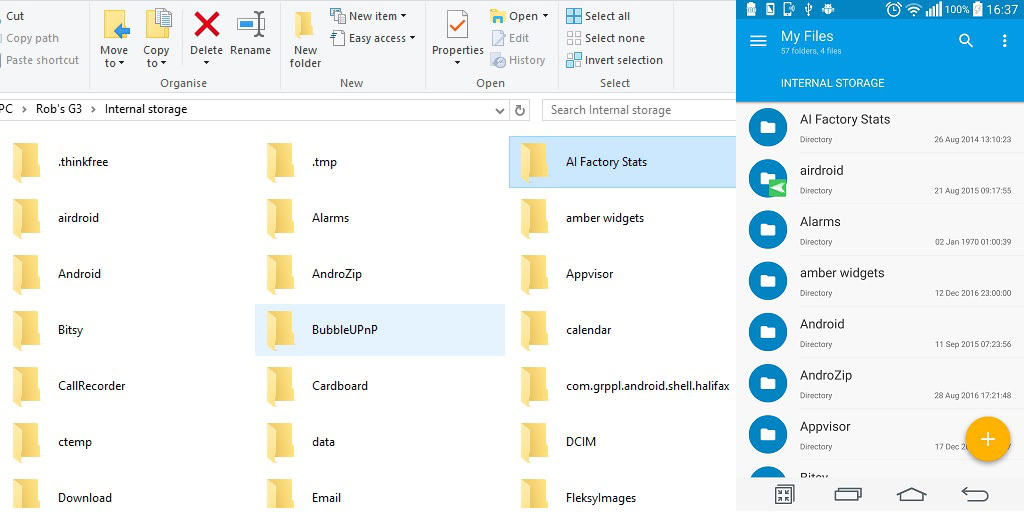How to Password Protect a Folder in Android Phone

Android file managers can be a powerful tool for keeping your handset organized, but Android's organizational structure, or seeming lack of one, can be a little daunting for the casual browser. App data, pictures, music, and more are all accessed through a single starting folder, and that's certainly a different take to the hierarchy that PC and Mac users will be used to, and is much more powerful than what's available to iOS users.
With Android, you won't have access to the deepest Android system files with a basic file manager or PC connection. Still, this doesn't mean that you can just delete any file at will. Here's a breakdown of some of the most common storage folders, what they're for, and which ones you can delete.
Storage hierarchy
Since Android is a Linux-based operating system, your handset features a Linux-esque file system structure. Under this system there are six main partitions on every device: boot, system, recovery, data, cache, and misc. MicroSD cards also count as their own memory partition. Devices that ship with Android 7.0 Nougat and the introduction of seamless updates adds in a second system partition, one of which is updated in the background and can be quickly switched to on reboot, making the update appear seamless. Here's a quick breakdown about what's contained in each partition:
- boot –This partition contains the kernel, ramdisk, etc. required for the phone to boot when powered on.
- system –The system partition houses the operating system files (also known as the ROM), which includes the Android UI and pre-installed applications.
- recovery – An alternative option to booting into the OS, the recovery software can allow the user to backup and restore other partitions.
- data –The data partition saves user data ranging from contacts and messages to apps and music, and is the partition you can access via a file browser. This sector is wiped when performing a factory reset.
- cache –Android stores frequently used data and app components here. This can be wiped to fix certain issues and is automatically rebuilt and updated over time.
- misc – This partition contains other important system setting information, such as a USB configuration, carrier ID, and other hardware settings, usually saved in the form of on/off switches.
Without root access, Android users only have access to the data partition and that's what you'll be looking at when connecting your phone up to your PC or browsing via a file manager. Your microSD card, if applicable, will also appear mounted under this user accessible data partition, which you can also access via PC or a file app.

Normally you can only access app data saved in the user data partition. Root access is required for apps and users to access other memory locations.
Apps and common folders (the data partition)
With that background out of the way, we now know that we don't have access to any of the core boot, recovery or Android system files when browsing through the data partition, so causing a catastrophic system failure would be pretty hard to do. This is different for root users though. Even so, we still need to be careful about what we do in this sector, as certain apps can rely on data saved here and deleting or moving it can cause system instability.
Before we go any further, you may want to hop on into your phone's data partition to take a look what's in there. To do this, phones with Android Marshmallow or Nougat installed come with their own file manager that can access this full partition. This option is hidden away underSettings > Storage > Other. Some phones on older versions of Android may or may not include their own file explorer, depending on the OEM.
Alternatively, there are plenty of third-party applications available on the Play Store that can do the same thing. Two of the most popular are FX File Explorer and Solid Explorer. (Editor's note: ES File Explorer used to be a great option, but we can't recommend it anymore due to its user-unfriendly ad practices.)
It's also possible to browse your files on your PC by connecting via USB. Just make sure that your phone is in MTP (Media Transfer) mode so that you can see the full data partition.

Your internal storage can be accessed both through your PC or directly on your phone via a file browser.
If your internal storage is looking a little full, you may notice that there are a number of folders here dedicated to apps, perhaps even leftover ones that you have uninstalled. As a rule of thumb, we don't recommend tampering with any app files, but if you have uninstalled an app and notice that a folder is left behind then there shouldn't be any harm in deleting the folder. It's probably empty anyway, or contains some log files that are no longer of any use.
Even if you don't have many apps installed, by default this user data partition will contain a number of folders used for storing your contacts, picture, music, etc. Here's a breakdown of the most common folders that you'll find here, which don't belong to a third party app.
- Android – This is the default location used for app cache and saved data. Not recommended to delete unless you don't mind losing your app data; doing so might cause some apps to malfunction.
- Alarms, Ringtones, Notifications – This folder stores custom audio files for alarms, ringtones, and notifications that can be used by some default and third party apps.
- Cardboard – This is another self-explanatory folder, which contains data for some virtual reality apps, but will otherwise be empty.
- DCIM – Pictures taken by your main camera app are saved in here. You'll find this folder created on your microSD card if you opt to save pictures there, too.
- Downloads – Anything that you download from a web browser, such as Chrome or Firefox, will appear here.
- Pictures, Music, Movies, Video – These are all default folders used by various apps for your media needs. Some apps will allow you to specify other locations, but most media players will search these directories by default. Screenshots are often saved in the pictures folder.
- Podcasts – This folder is used by some apps to separate postcast files from the rest of your music. Will be empty if you don't use a podcast app.
So, which storage folders can I (or should I) delete?
With app folders, it's not recommend to tamper with them unless you know exactly what you want to delete. It's safe to add and delete files from any of the media locations, but might not be wise to get rid of the folder all together. If a folder is empty, such as the Alarms folder, you might think you don't need it, but it's also not taking up any meaningful space on your device and it's probably best to keep it less some app rely on it at a later time.
10 best Android file explorer apps, file browsers, and file managers
Apps

Overtime, your phone's internal memory is likely to look a lot busier than just these folders above, as you install and uninstall a growing number of apps. An occasional tidy-up is never a bad idea, but unless you move files on and off your phone regularly, I wouldn't worry about it. Plus, removing empty folders isn't going to free up any space; instead you'll likely have to remove apps or delete some movies.
Now that you know what each of these folders is used for, you'll hopefully find it easier to keep your Android handset that little bit more organized.
Thanks for the suggestion, Sagar Siddhapura!
How to Password Protect a Folder in Android Phone
Source: https://www.androidauthority.com/phone-storage-folders-explained-744100/